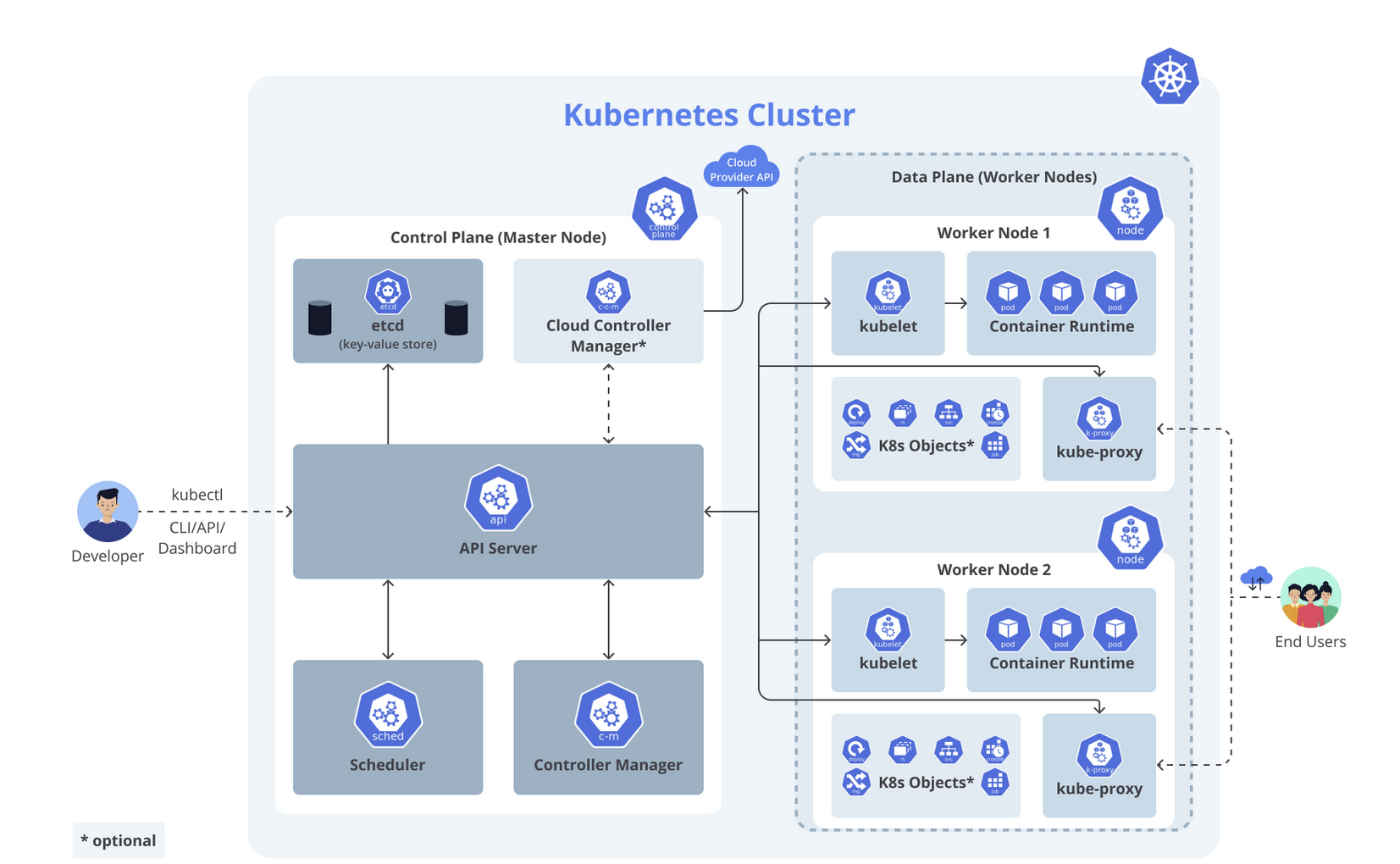Kubernetes Architecture

Cluster
A Kubernetes cluster consists of multiple host machines (nodes), including at least one control plane (master node) and one or more worker nodes (physical or virtual machines).
Control Plane (Master Node)
Manages scheduling and container orchestration across nodes. It includes:
- etcd: A distributed key-value data that maintains the cluster state, configuration data, and service discovery information.
- API Server: The core communication hub for all Kubernetes components, handling RESTful requests and acting as the interface between users and the cluster.
- Scheduler: Monitors newly created pods that do not have assigned nodes and determines the best node for deployment based on resource availability and constraints.
- Controller Manager: Runs background processes (controllers) that ensure the
observed statealign withdesired stateof the cluster, such as maintaining the correct number of pods, updating deployments, and managing node failures.
Worker Node
Each worker node runs workloads assigned by the control plane. It includes:
- Kubelet: An agent running on each node that manages the node's state, starting, stopping, and maintaining containers based on instructions from the control plane.
- Kubernetes Proxy (kube-proxy): A network proxy that manages network rules to enable communication between services inside and outside the cluster. It routes traffic and maintains network connectivity across pods.
- Container Runtime: Responsible for running containers on the node. Kubernetes supports multiple container runtimes such as containerd, CRI-O, and other Kubernetes CRI (Container Runtime Interface) implementations.